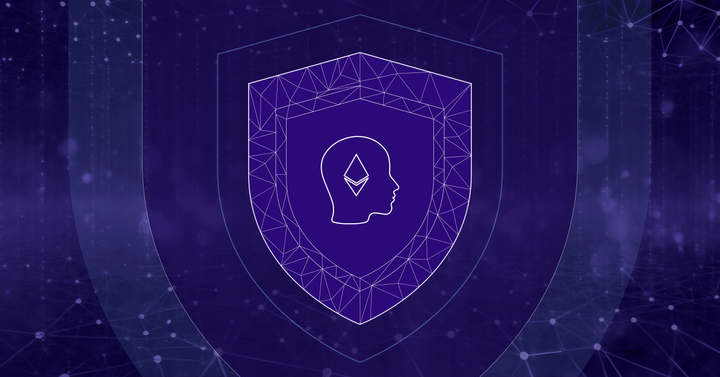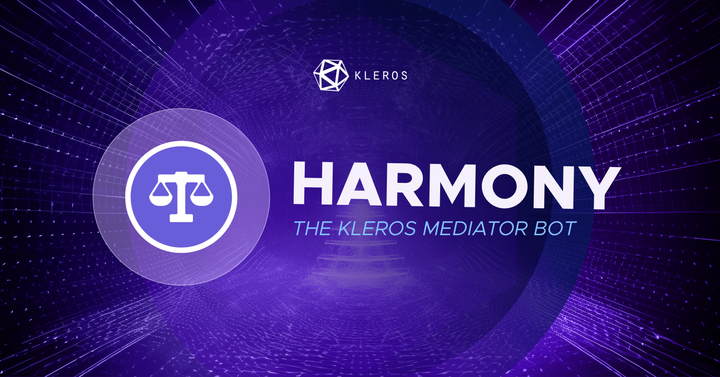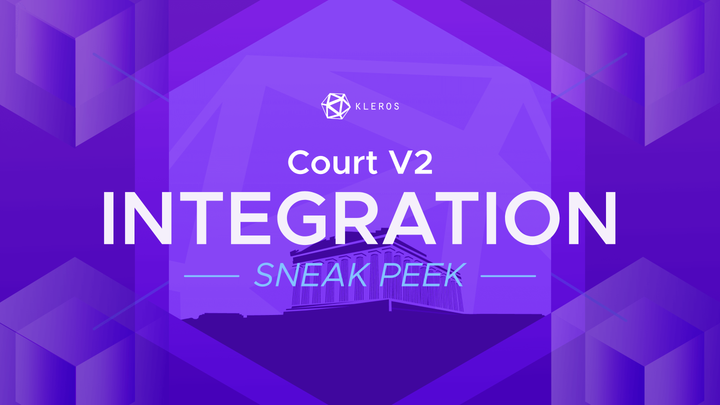PNK Rewards with Omen Conditional Markets - A Guide
We’ve started a bounty reward program which incentivizes liquidity providers to the platform...
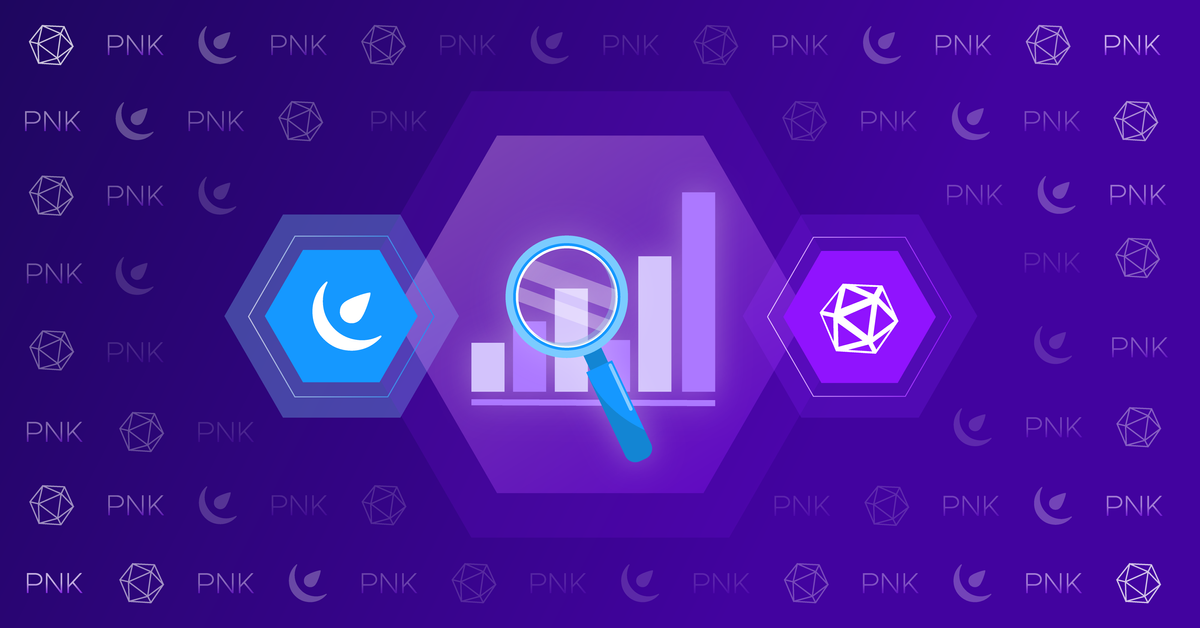
To celebrate the recent launch of DXdao' Omen platform which includes Kleros as an arbitrator, we’ve started a bounty reward program which incentivizes market creation and liquidity providers to the platform.
Omen is a frontend allowing users to create prediction markets based on Gnosis’ conditional platform. In this article, we’ll focus on the reward structure and how you can create and add liquidity to Omen markets.
First up, let’s clear up the reward structure and the various payment possibilities.
- Market creators using Kleros as final arbitrator will be eligible for a part of 1,000,000 PNK over a 3 month timeline starting from 29/07/2020 and ending on 29/10/2020.
- Users should create a market and add liquidity to the market in order to be eligible.
- In each of those months, 300,000 PNK will be split between market creators in proportion to the liquidity of their markets*.
- The market can be created using any of the tokens available on Omen (DAI, cDAI, USDC, OWL, CHAI, GNO, USDT, sUSD or WETH) as collateral.
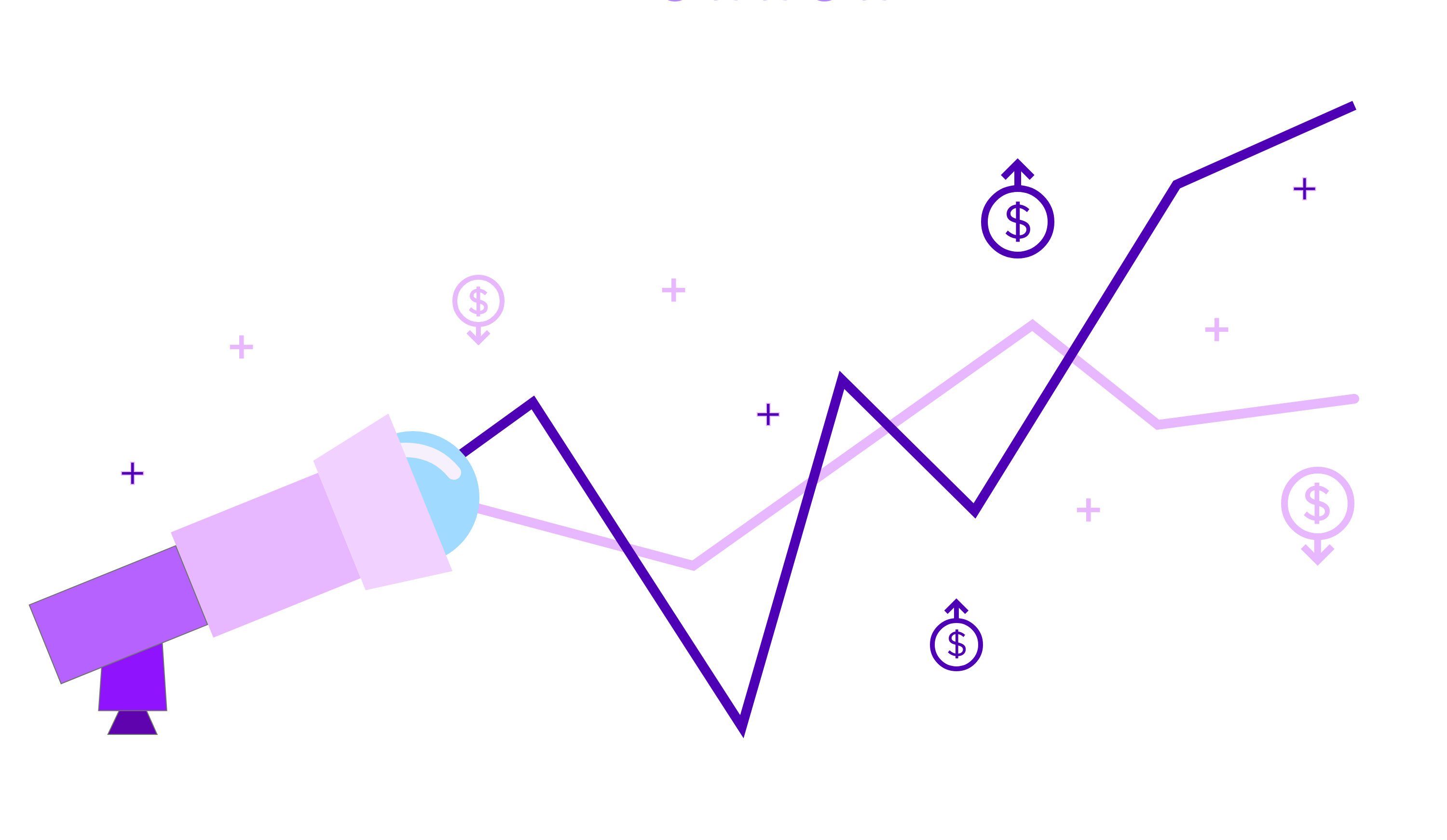
Note that this reward is given in addition to the 2% liquidity fee going to liquidity providers.
*The rewards are in proportion to the amount of liquidity (pool tokens value * collateral price in USD) and of the time this liquidity stayed in the market during the month (1000$ of liquidity during 2 weeks would yield the same reward as 500$ of liquidity during 1 month). Trivial markets such as “Is the sky blue?” or markets whose resolution does not present a significant uncertainty will be excluded. Duplicate markets (markets which are similar or almost similar to already existing markets) will not be taken into account even if the currency used by the duplicate market is different from the original one.
On top of that, the dxDAO will vote to reward 100,000 PNK to the creator of the market it considers to be the most impactful throughout the reward period. This vote will be conducted under a dxDAO proposal voted on by the DAO members.
Market Validity
In conjunction, users can interact with Kleros Curate a permissionless token curated registry which has a ready built list of validated markets. Users can both submit their own and challenge those of others. For more information on Curate, check this link.
If you just want to know if a market is valid or not, click here to see the list.
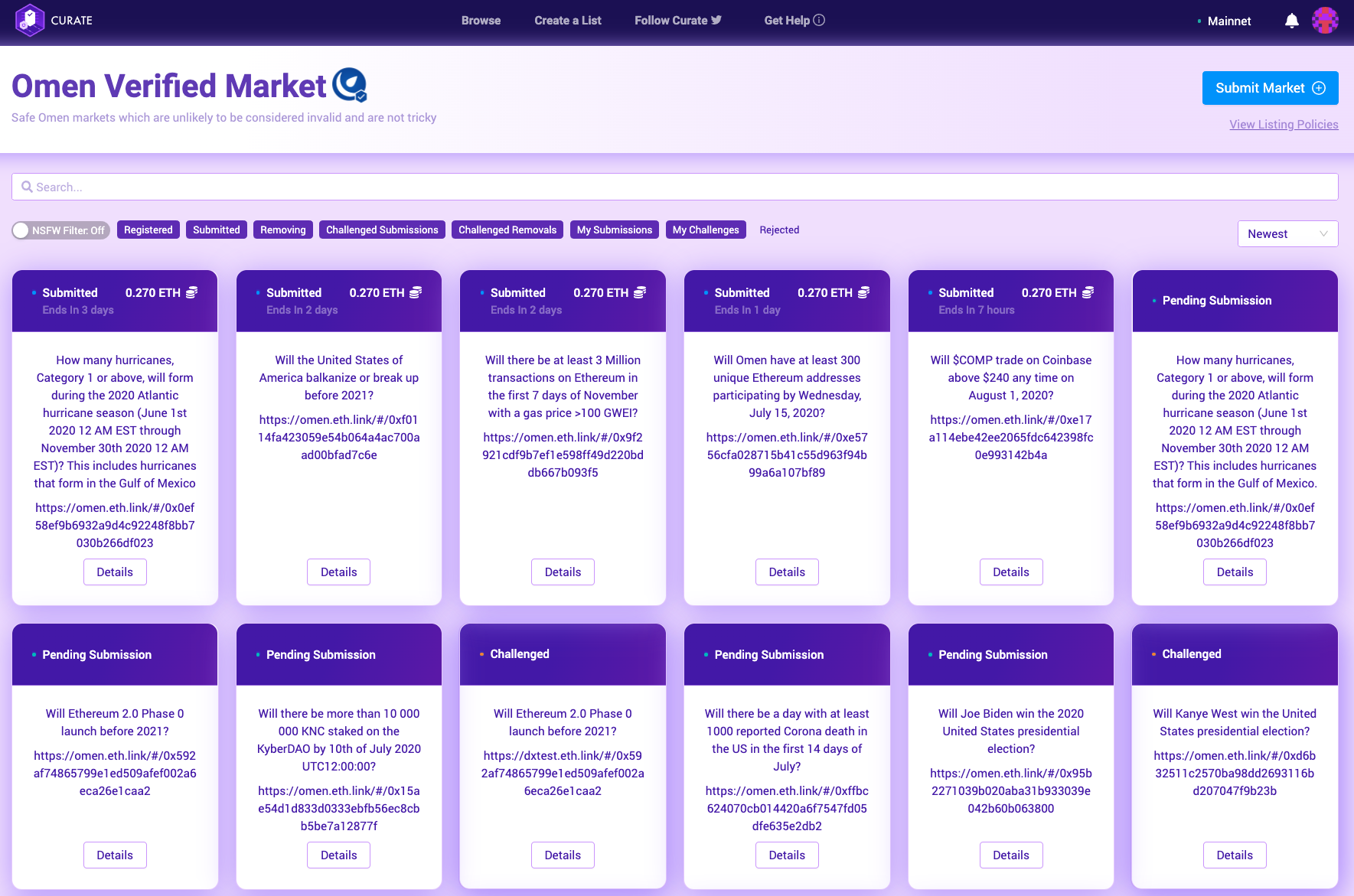
The Power of Prediction Markets
Omen is a platform for creating, providing liquidity to and participating in information markets. Users can create information markets on various topics (crypto, politics, sports, etc.) and risk their crypto on possible outcomes. The arbiter then validates the outcome, and the users who hold shares of the correct result collect the crypto held as collateral.
What is an Information Market?
Sometimes referred to as prediction markets or decision markets, information markets are a vehicle for aggregating financially-backed sentiment about the expected outcome of a future event.
In the context of Omen, an information market is a place where potential outcomes of an event are bought and sold. When the event occurs, the market pays out to holders of the outcome that actually occurred.
This is a tool that can be used to predict the likelihood of events using the power of an incentivized ‘hive mind’. Users can interact with markets both adding their own input to the final prediction outcome and offering a reward for a correct prediction. This creates a ‘knowledge loop’ of sorts which with every cycle better predicts the potential outcome.
Creating a Market
Head over to Omen, connect your Web3 wallet and click on ‘Create Market’.
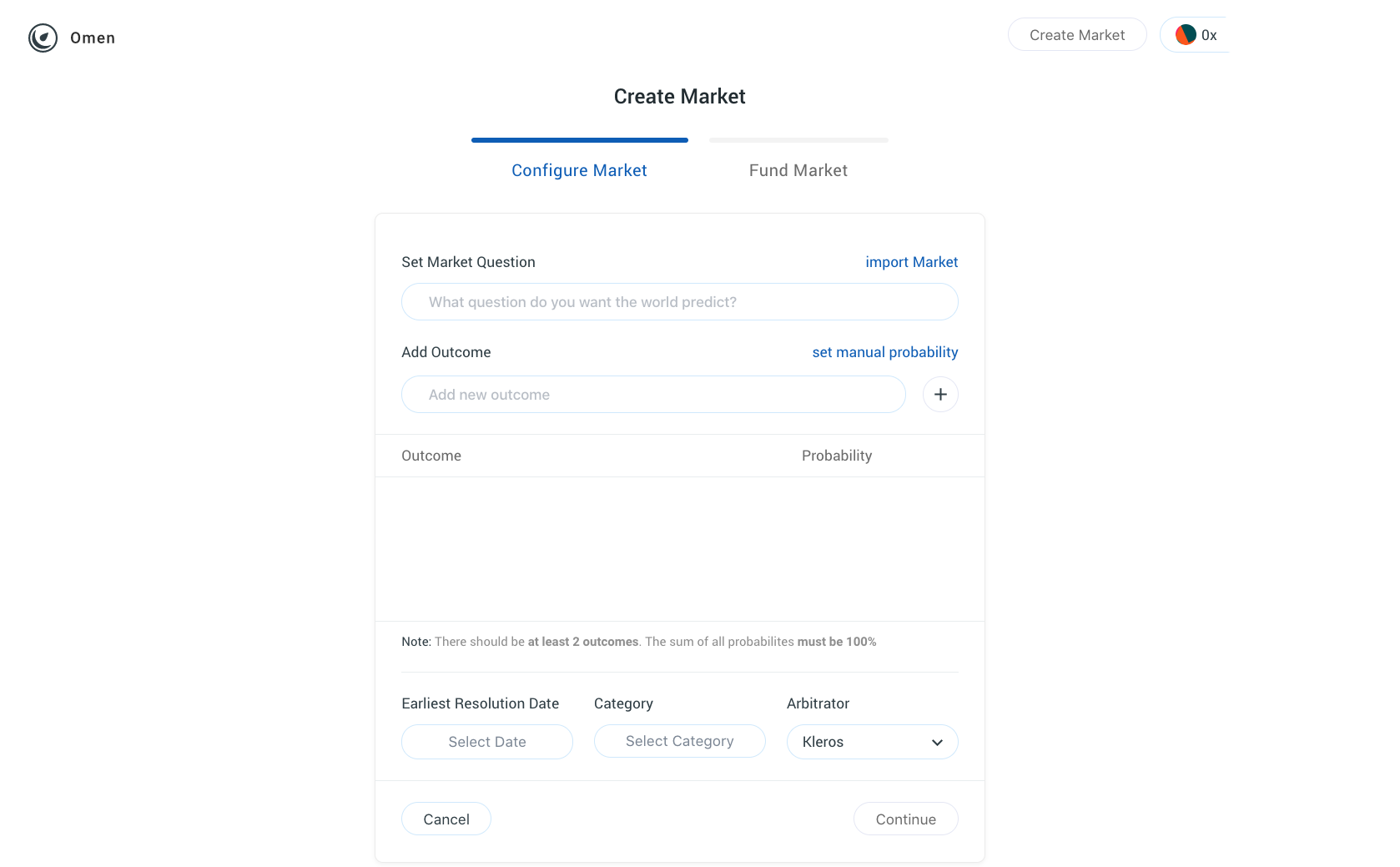
You'll see a page much like the below which allows you to create your question, add the potential outcomes and their respective weights, choose the date for resolution and the arbitrator.
- Set the market question to begin.
Example: Who will win the 2020 United States presidential election?
- Add the potential outcomes to this question.
In our example, there will be three potential outcomes, but the platform supports multiple outcomes.
- Fill the resolution date
Of course, this should be after the outcome is known (in our example, after the election).
- Select ‘Kleros’ as arbitrator for the market in order to be eligible for the reward.
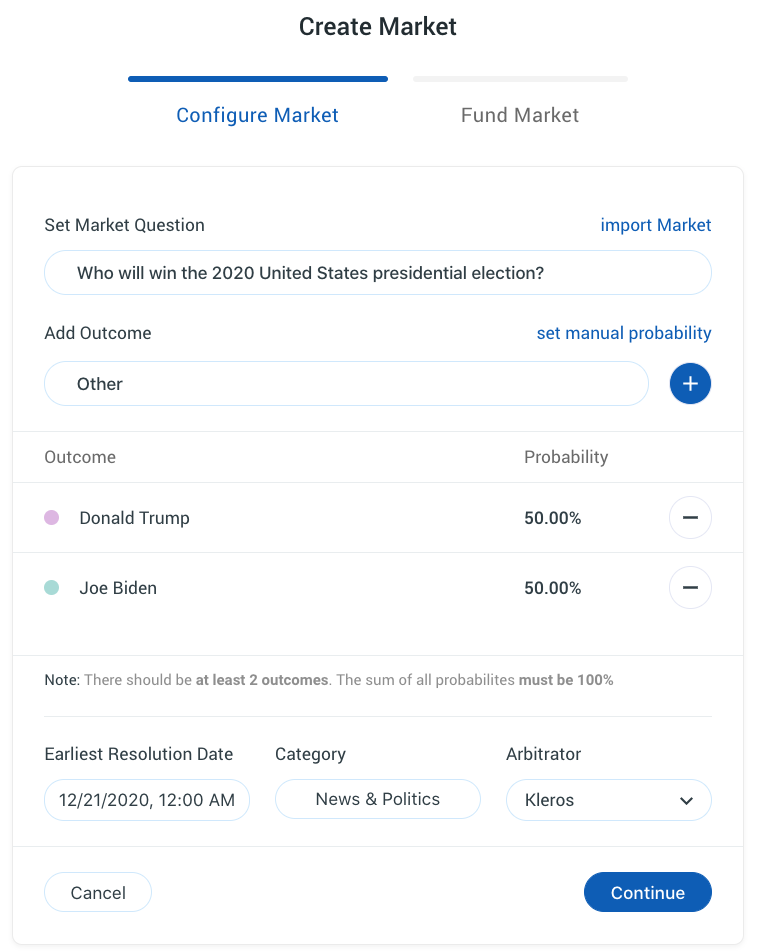
Here we can see the actual market in action with users affecting the initial outcome probability by buying the option they think will win.
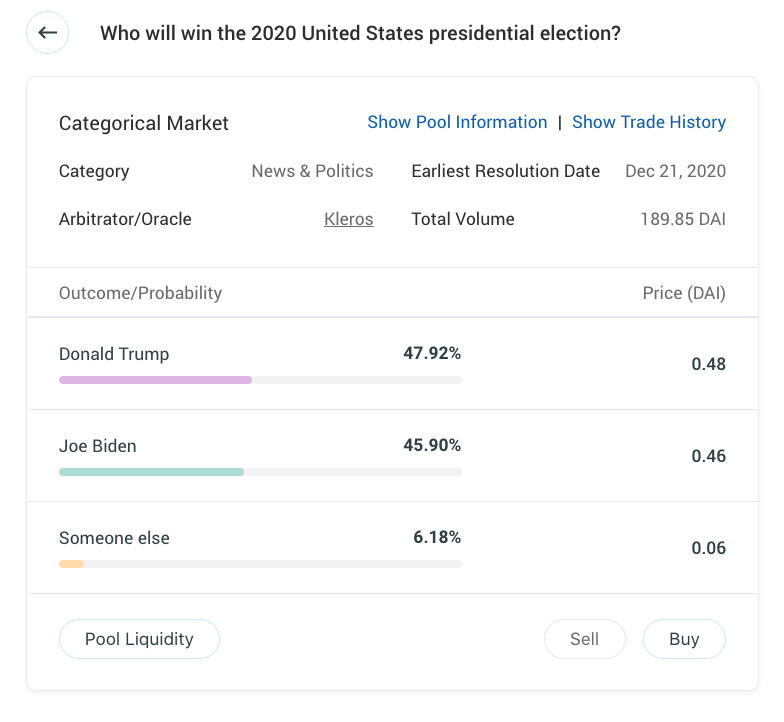
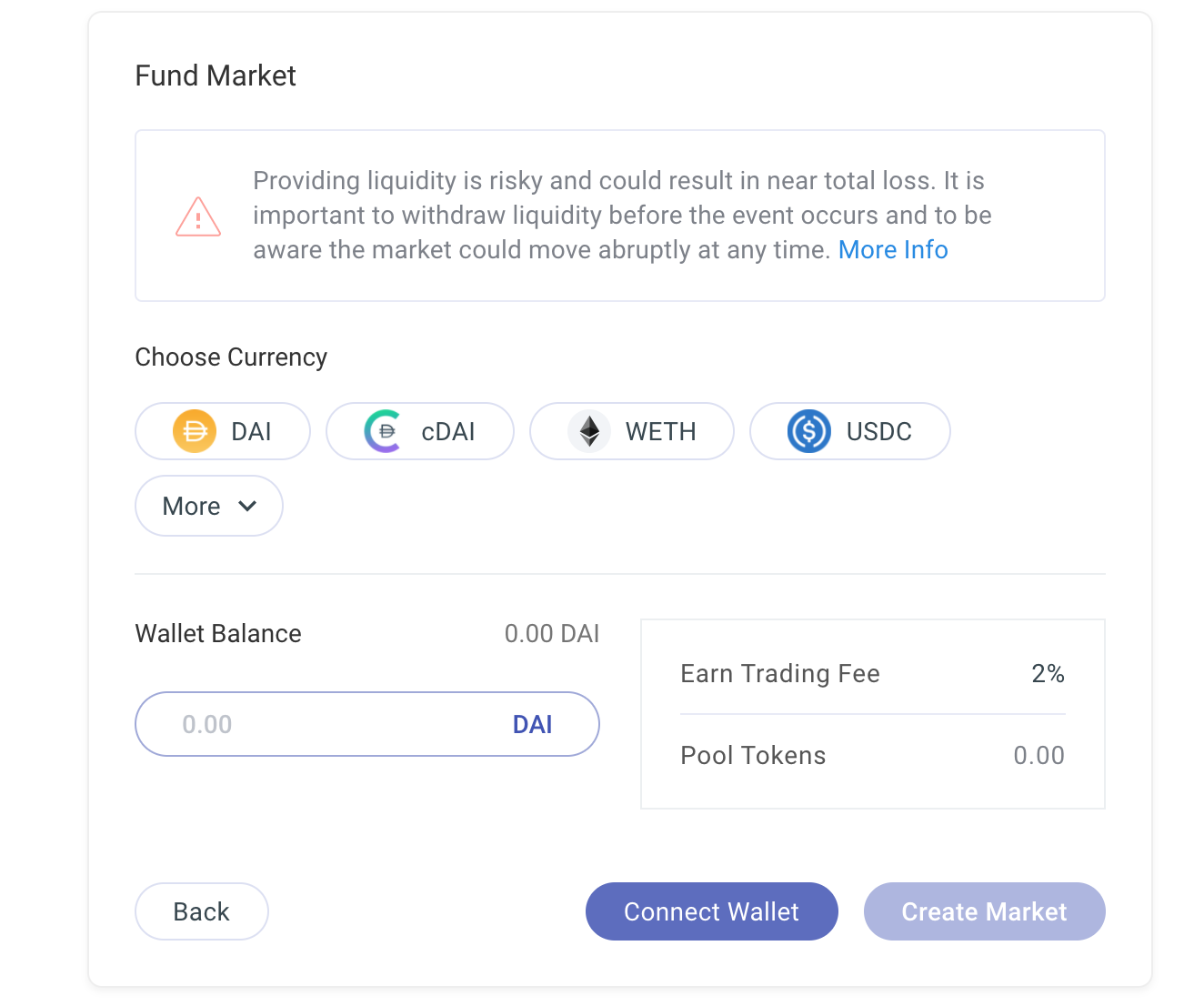
Funding Your Market
Once you’ve filled out the Configure Market section, you can now fund your market by adding liquidity from the token of your choice in the following image.
When you’re happy with the settings, click “Create Market”, pay the transaction fees and add your funding. After this, the market will be created.
You can also add liquidity to open questions which we’ll look at below.
Add Pool Liquidity To Open Market
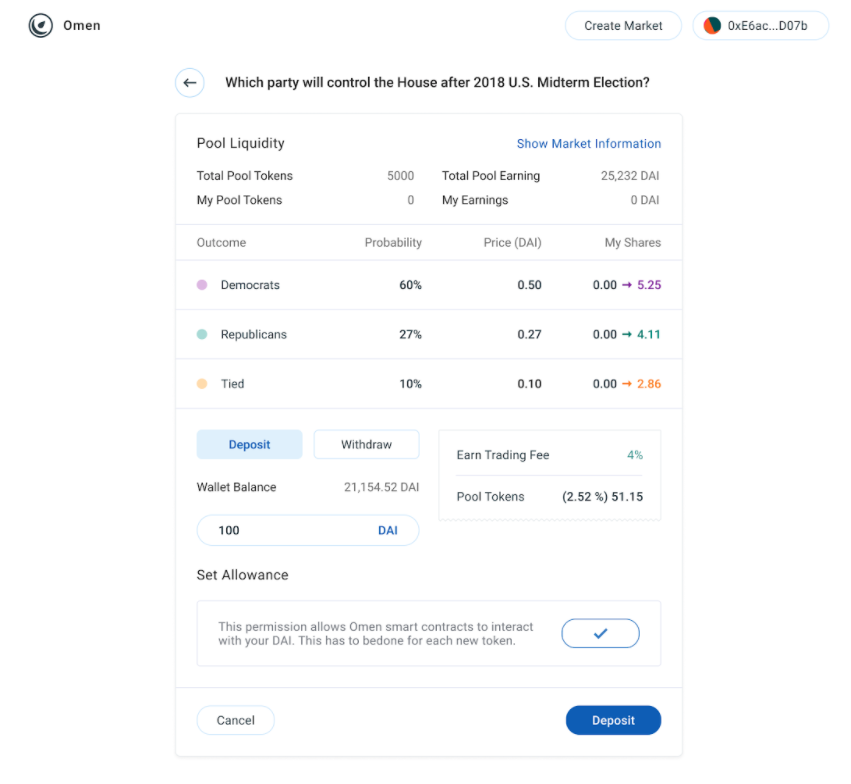
Two actions are required to add liquidity to an Omen market. After giving allowance, the user can proceed with defining how much liquidity he/she wants to provide.
Providing liquidity means buying all outcome tokens in a proportion based on the likelihood of each outcome, which can be risky as the liquidity provider needs to make sure to remove the liquidity BEFORE the outcome is known. After the outcome is known, all tokens of outcomes other than the winning one would lose their value.
As a reward for providing liquidity and taking this risk, liquidity providers are rewarded with a trading fee.
Withdraw Pool Liquidity
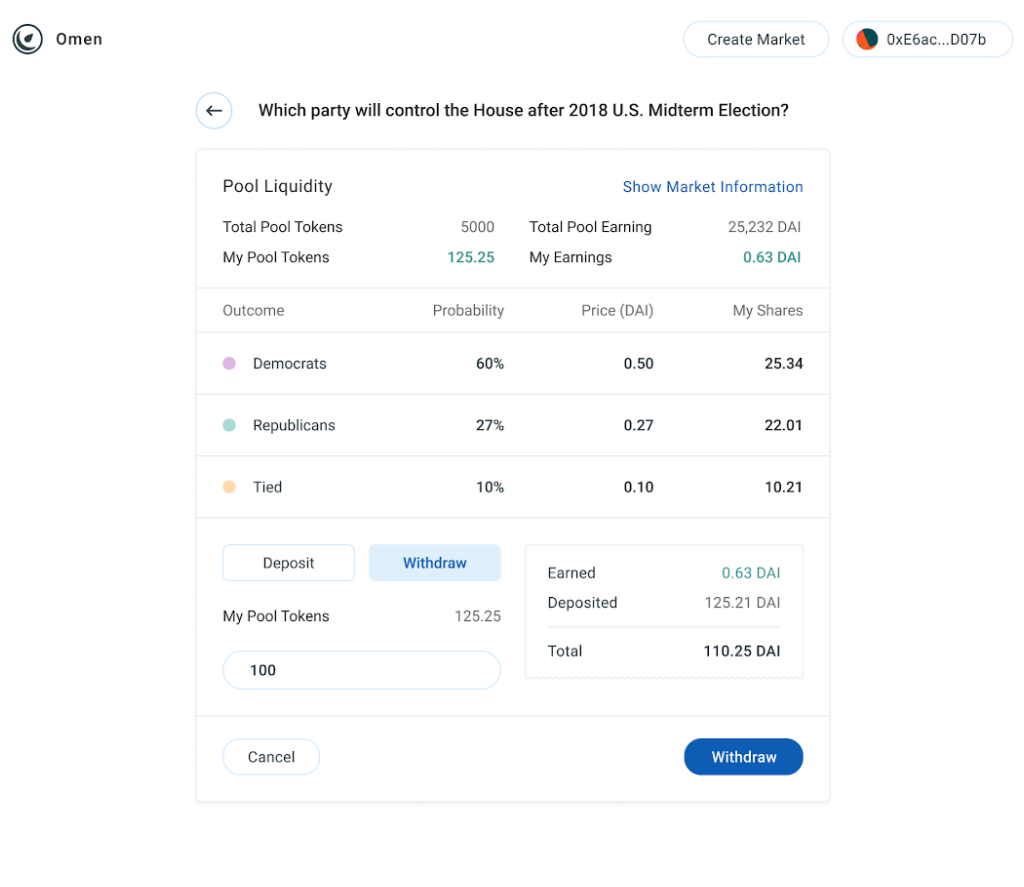
Users can withdraw liquidity by setting the amount of pool tokens which should be redeemed for collateral. The receipt shows the earnings, the previous deposited amount of collateral and the total amount the user is going to receive.
An Example
To understand the liquidity process a little better, let's see an example.
There is an open market with the question:
“Who will win the 2020 US Presidential election?”
The potential outcomes in this market are:
- 40% Trump
- 40% Biden
- 20% Other
As a user, you deposit 100$ of liquidity in the relevant stablecoin.
This gives you 100 tokens split between Trump and Biden and also, 100 ‘Other’ tokens.
Then 100 ‘Other’ tokens, 50 Trump tokens and 50 Biden tokens are added to the curve.
You then have 50 Biden and Trump tokens left and a 100% ownership of the curve.
Note: less Biden and Trump tokens were added in the curve compared to ‘Other’, as they are worth more than the ‘Other’ tokens due to having twice the chance of being redeemable for DAI (according to initial estimates).
Now, people can buy or sell into the curve which updates prices and the percentage.
It’s essentially the same idea as Uniswap using a different curve which can support more than 2 tokens.
When the market result is known, tokens of the winning outcome are redeemable for DAI.
Removing Liquidity
It is advisable to remove tokens from the curve before the outcome is known. Otherwise traders will be able to buy tokens from the winning outcome or sell tokens from the losing one to the curve and you will end up only with valueless unredeemable tokens.
Note that this is possible as soon as one outcome becomes impossible. So you should remove the liquidity before any outcome is ruled out. In our presidential election exemple imagine that Trump withdraws from the campaign, it would now become impossible for him to be elected. So a trader could put 10,000,000 DAI in order to get 10,000,000 Biden, Trump and ‘Other’ tokens.
The trader could keep the 10,000,000 Biden and ‘Other’ tokens with the guarantee to get 10,000,000 DAI out of them (since either Biden or someone other than Trump will win) and sell the 10,000,000 Trump tokens into the curve (draining almost all of it).
For some markets, it may not be possible to have a guarantee to be able to remove the liquidity before an outcome is ruled out. This is a risk liquidity providers should be willing to take as long as it is compensated by the liquidity fee.
(In certain really specific cases, you may still keep liquidity in the curve at a time where the outcome may be known and hope to have liquidity fees compensate the loss but we don’t advise doing that unless you really know what you're doing.)
Conclusion
Prediction markets arbitrated by Kleros are secure and efficient allowing users to create markets safe in the knowledge they have recourse to dispute resolution should the necessity arise.
We look forward to the community creating some interesting prediction markets and taking advantage of the large PNK reward available.
For more information on Kleros and Omen check the links below.
A Good Omen - Launch and Explainer

Where Can I Find Out More?
Join the community chat on Telegram.
Visit our website.
Follow us on Twitter.
Join our Slack for developer conversations.
Contribute on Github.
Download our Book
